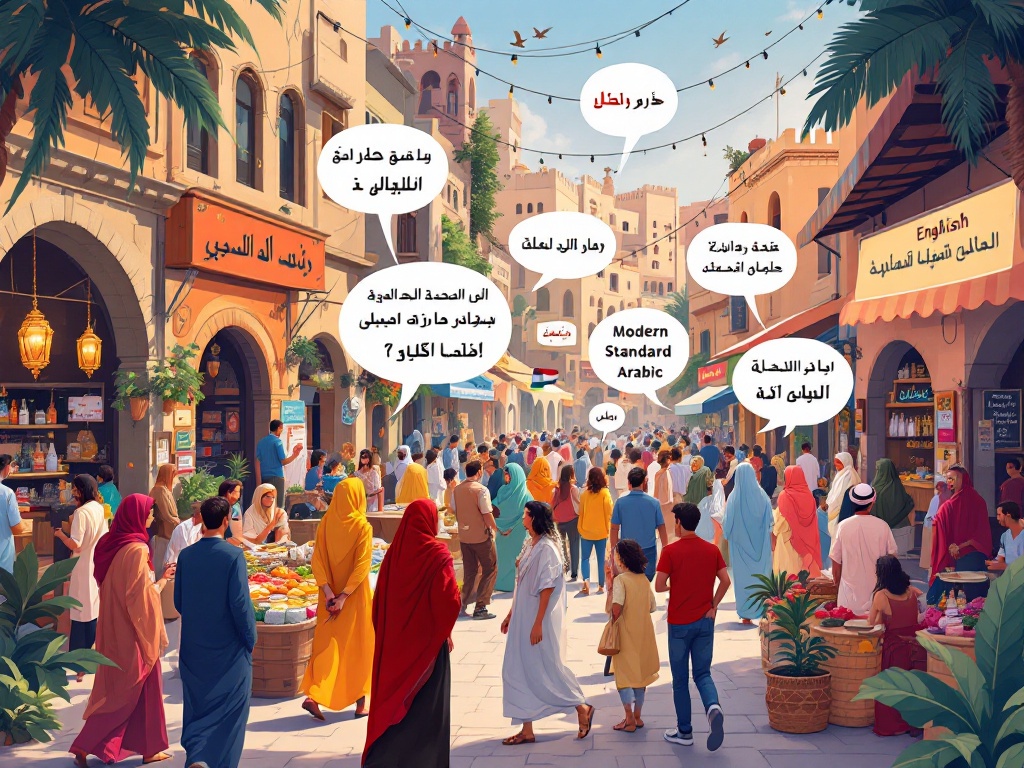What Languages Are Spoken in Jordan?
Discover the fascinating linguistic landscape of Jordan, where Modern Standard Arabic reigns as the official language, yet a vibrant mix of dialects and languages thrives. From the everyday use of Jordanian Arabic to the prevalence of English in business and tourism, explore how history and culture shape communication in this Middle Eastern nation. Uncover the influence of neighboring countries, the role of minority languages, and the impact of English fluency on Jordan’s global connections. Delve into the dynamic interplay of languages in Jordan and broaden your understanding of this culturally rich nation.
Important information

- Modern Standard Arabic (MSA) is Jordan’s official language, used in formal settings like government, education, and media.
- Jordanian Arabic, a Levantine Arabic dialect, is the main spoken language in everyday conversations, with variations existing between sedentary and Bedouin communities.
- English is widely used, especially in cities, for business, tourism, and higher education.
- Minority languages like Armenian, Chechen, and Circassian are spoken within their respective communities.
- French, while less common than English, is also spoken by some due to historical ties and its presence in education.
What Languages Are Spoken in Jordan?
English is widely spoken in Jordan, especially in cities, making it easy for business, tourism, and education. While Modern Standard Arabic is the official language, other languages like Armenian, Chechen, and Circassian add to the mix. French is also present due to historical ties and its use in education. Jordan’s linguistic history includes Aramaic and Ottoman Turkish, and migrant communities bring languages like Sinhalese and Tagalog, creating a diverse linguistic landscape.
Official Language of Jordan
Modern Standard Arabic is Jordan’s official language, used in education, government, and media. It plays a central role in Jordanian life.
Modern Standard Arabic: The Primary Language
While Modern Standard Arabic (MSA) is Jordan’s official language, used in formal settings like government, schools, and news broadcasts, everyday conversations typically happen in a local Arabic dialect.
Diglossia in Language Use
Modern Standard Arabic (MSA) is the official language of Jordan, used in official documents, education, and news broadcasts. However, daily conversations employ Jordanian Arabic, a distinct colloquial dialect. This situational language shift, using different forms depending on the context, is known as diglossia. This mirrors the contrast between formal written and casual spoken English. Diglossia highlights language’s adaptability to various social situations.
Regional and Dialectal Varieties of Arabic in Jordan
Jordanian Arabic, a Levantine Arabic dialect, is the primary language spoken in Jordan. Regional variations exist, influenced by neighboring countries and Bedouin dialects. Palestinian Arabic is also prevalent, particularly in areas with significant Palestinian communities. Less common dialects can also be found throughout the country.
Jordanian Arabic and Its Varieties
Jordanian Arabic exists in two main forms: sedentary and Bedouin, reflecting the country’s diverse population. Sedentary Jordanian Arabic is spoken in the settled towns and villages, while Bedouin Jordanian Arabic is used by the nomadic tribes, showcasing Jordan’s rich cultural heritage.
Influences and Vocabulary in Jordanian Arabic
Jordanian Arabic shares similarities with neighboring dialects, drawing influences from Palestinian, Syrian, and Iraqi Arabic. These influences shape its unique vocabulary, expressions, and distinct character.
Bedouin Language and Its Speakers
Bedouin Arabic, primarily spoken by the Bedouin tribes inhabiting Jordan’s deserts, stands apart from city Arabic. It reflects the tribes’ unique culture and nomadic lifestyle. Their traditions heavily influence their distinct language.
Languages Apart from Arabic in Jordan
English thrives in Jordan, especially in urban centers and among educated individuals. It’s the main language for business, tourism, and higher education, effectively linking Jordan to the global community.
While not as widespread as English, French remains present in Jordanian society. Some citizens speak French, often due to historical connections or educational experiences, including French language instruction in certain schools.
Within Jordan’s diverse cultural landscape, Armenian and Circassian communities actively maintain their native languages as a crucial connection to their heritage and customs.
A smaller community also speaks Chechen, further enhancing Jordan’s rich linguistic diversity.
English as a Second Language
English is widely spoken in Jordan, particularly in urban centers like Amman. Its prevalence stems from the early introduction of English in schools, resulting in strong English proficiency among young Jordanians, especially within the tourism, business, and education sectors. Moreover, English appears on signage and in media, facilitating communication with international visitors and businesses, effectively bridging the cultural divide.
French and Other European Influences
French is not widely spoken in Jordan, and other European languages are even less common.
Minority Languages: Armenian, Chechen, Circassian
Jordan’s minority communities, including Armenians, Chechens, and Circassians, maintain their distinct languages, enriching the nation’s diverse linguistic landscape and cultural heritage.
Historical Languages: Aramaic and Ottoman Turkish
While Aramaic has faded from common use in Jordan, it is still spoken in some communities. Ottoman Turkish is also spoken by a small number of Jordanians, a vestige of the Ottoman Empire.
Languages of Migrant Communities: Sinhalese and Tagalog
Sri Lankans speak Sinhala, while Filipinos speak Tagalog.
Social Dynamics and Language Use in Jordan
Jordan’s culture thrives on a vibrant mix of languages. Arabic and English are fundamental to education and daily communication. English plays a key role in tourism and business, while a rich tapestry of Arabic dialects permeates Jordanian society. Influences from neighboring countries further enrich this linguistic diversity.
Language in Education and Communication
Jordanian schools use Arabic as their primary language of instruction, but English is a compulsory subject. This emphasis on English not only cultivates excellent communication skills but also expands opportunities for students, better preparing them for university and international careers. Moreover, French is offered as an elective in many schools, giving students a chance to learn another language.
Role of English in Tourism and Business
English plays a crucial role in Jordan’s tourism and business sectors, particularly in cities like Amman. This widespread fluency facilitates communication with international tourists and global business partners. Younger Jordanians and professionals often demonstrate particularly strong English skills. This is thanks to early English education in schools and its extensive use in universities and businesses. Beyond these economic advantages, English also strengthens Jordan’s international relations and fuels its economic development, driving growth across the country.
Influences on the Jordanian Language Landscape
Jordan’s linguistic landscape is a vibrant mix of Arabic dialects, primarily Jordanian Arabic, a Levantine variant. This central dialect is colored by neighboring influences, such as Palestinian and Syrian Arabic. Bedouin dialects, spoken by nomadic tribes, further enrich this linguistic tapestry. The impact of surrounding countries is evident in Jordan’s vocabulary, pronunciation, and grammar, reflecting its historical role as a cultural crossroads for trade and exchange. This intricate blend is confirmed by research from the University of Jordan’s Center for Strategic Studies, highlighting a rich cultural heritage woven with diverse linguistic threads.
Arabic Dialects Intersecting in Jordan
Jordanian Arabic is a captivating mix of dialects, drawing influences from Palestinian, Syrian, and Iraqi Arabic, creating a unique linguistic tapestry. This blend contributes to Jordan’s rich language diversity, evident in distinct vowel pronunciations and unique vocabulary. Researchers studying these influences have observed grammatical variations, along with regional differences in pronunciation and vocabulary. This vibrant mix reflects Jordan’s position at the crossroads of diverse Arabic traditions.
Impact of Neighboring Countries on Language
Jordanian Arabic is a vibrant blend of influences, primarily from its neighboring countries. The impact of Syria, Iraq, and Palestine is particularly evident due to shared borders that facilitate constant language exchange. This exchange has resulted in a rich tapestry of dialects within Jordan. Some dialects incorporate Syrian vocabulary, while others adopt Iraqi pronunciation patterns. The influence of Palestinian Arabic is also unmistakable in certain regions of Jordan.












